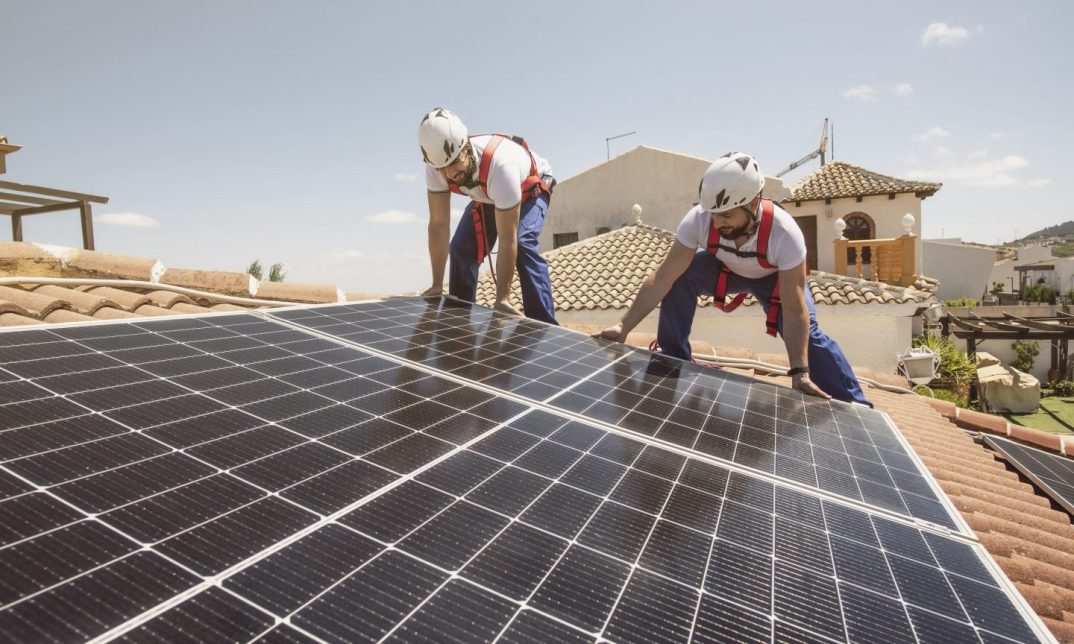The Inflation Reduction Act of 2022, or IRA, included tax credits and rebates for homeowners who make energy-saving updates to their homes. Credits for improvements like new solar panels, windows, doors and air conditioners are available now, while rebates for larger energy-efficient updates are available in some states and upcoming in others [0].
Here’s what to know about these perks, plus tips to plan your projects.
Home improvement tax credits for smaller updates
Tax credits reduce your tax liability for the year, says Los Angeles-based certified public accountant Michael DiBernardo. For example, a $500 credit lowers your taxes owed by $500.
The IRA allows homeowners a 30% tax credit for some energy-efficient updates, capped at $1,200 per year. There’s also a $2,000 credit for heat pumps, heat pump water heaters and biomass stoves.
Make the most of it: Combining projects — like new insulation and a heat pump — can get you up to $3,200, says Kara Saul Rinaldi, president and CEO of the energy and environmental strategy firm AnnDyl Policy Group and an advocate of policies that helped shape the IRA.
Keep receipts for each eligible update and add them to your tax forms, Saul Rinaldi says.
Tax credits for solar panels
Homeowners can get a tax credit of 30% of the total cost to buy and install solar panels until 2032, after which the tax credit reduces. The solar tax credit is only available the year you install the panels, and there’s no dollar limit. So if you pay $15,000 to put solar panels on your house, you can claim a $4,500 tax credit.
Any unused credit carries to future years, so if you don’t owe taxes this year, you can use it later.
Make the most of it: The tax credit will reduce the cost of going solar, but if your goal is to lower your utility bill, first determine when you’ll see savings, which depends on how much you currently pay.
The average payback period for solar panels is five to fifteen years, according to the Center for Sustainable Energy, a policy and research firm [0].
Rebates to generate big savings — eventually
Unlike the credits, two new rebates in the IRA are designed to be offered at the point of sale. One program offers up to $8,000 for retrofit projects that lead to energy savings, and the other provides up to $14,000 for new electric appliance purchases.
Low- to moderate-income households — defined in the IRA as those with total annual incomes of less than 80% of their surrounding area’s median — will be eligible for larger rebates than those with higher incomes.
Even if you don’t usually owe taxes and can’t use the IRA credits, the rebates mean you can still get a discount on energy-efficient updates, Saul Rinaldi says.
Make the most of it: In some states, it may be months before homeowners can get the rebates. In the meantime, consider a home energy audit to determine which projects to start once the rebates are available. Then work the savings into home improvement plans for this year and next, Saul Rinaldi says.
Financing energy-efficient home updates
1. Other assistance
2. 0% interest credit card
A 0% annual percentage rate, or APR, credit card may be just as good as cash if you pay it off during the no-interest period. Good or excellent credit is usually required to qualify.
3. Home equity
If you have equity in your home, consider a home equity loan or line of credit to finance larger updates, like new solar panels. Rates are often lower than personal loans and credit cards, but your home is collateral for the loan.
4. Personal loans
This article was written by NerdWallet and was originally published by The Associated Press.





